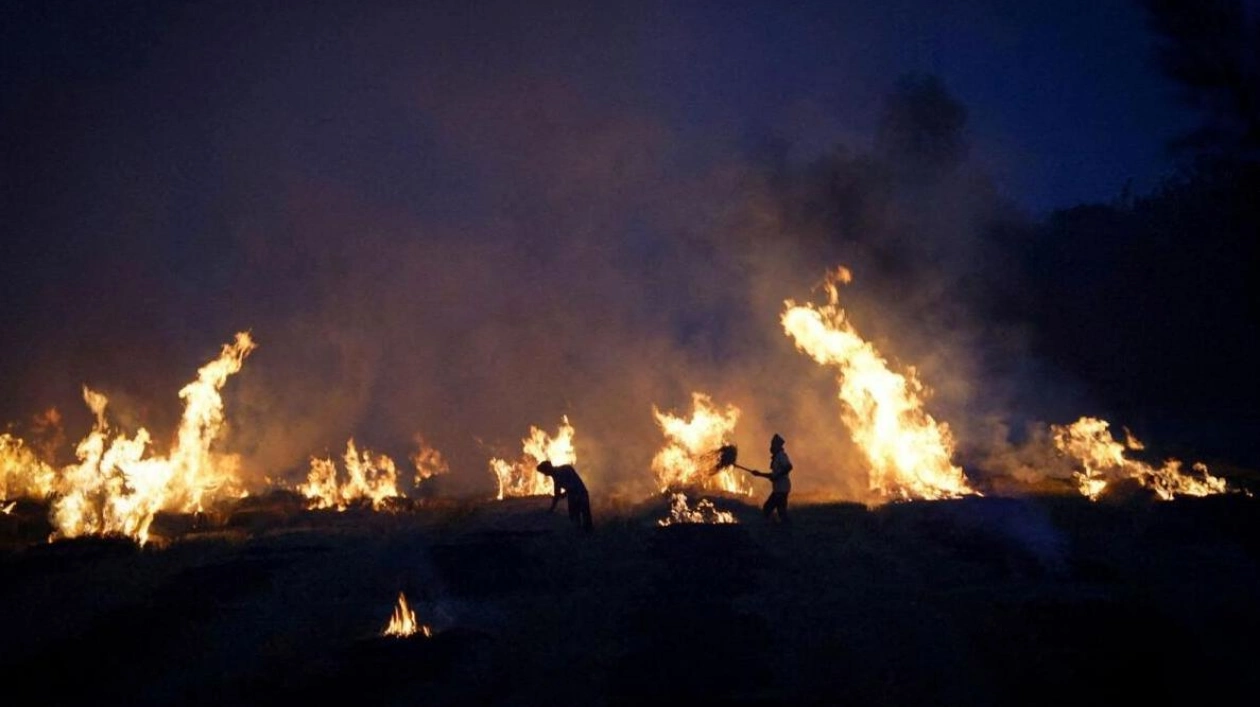Farmers burn stubble in a rice field at a village in Karnal, Haryana, India, on October 21, 2024. — Reuters
Swaran Singh is one of the few farmers in Bhikhi village, Punjab, who has chosen not to burn his crop waste this year. Instead, he has invested in a tractor and equipment to collect the waste for removal by a private contractor. The paddy waste, or stubble left after harvesting, has been chopped and stacked in a corner of his farm for several days, awaiting disposal. However, with sowing season approaching, time is running out. "I will wait for a few more days, and if no one comes to clear it, I will set it on fire," said Singh. "I cannot delay further as I need to sow seeds for the next crop." Crop residue fires, like those set by Singh in Punjab, India's agricultural heartland, are illegal and are annually blamed for the toxic smog that blankets northern India and neighboring Pakistan, a mix of smoke, construction dust, and vehicle emissions.
Burnt stubble is visible in a rice field at a village in Karnal, Haryana, India, on October 21, 2024. — Reuters
Air quality has worsened this year as well, with the onset of the harvest season and farm fires in late September exacerbating the public health crisis. The air quality index (AQI) in Delhi reached a peak of 494 on a scale of 500 on Monday, prompting authorities to impose restrictions on vehicle movement and construction activities, and to order schools to conduct classes online. Punjab reported the highest number of fires in a single day this season on Monday, with 1,251 incidents, according to state authorities. India categorizes an AQI reading of 0-50 as "good" and above 401 as "severe," posing a risk to healthy individuals and significantly impacting those with pre-existing conditions. Farmers in Punjab, Haryana, and Uttar Pradesh claim they have a narrow window to clear the land between the paddy harvest and sowing the winter wheat crop. Efforts to encourage them to use machines to chop the stubble or chemicals to dissolve them have been unsuccessful due to the high costs of machinery and the low efficacy of the chemicals. While penalties and subsidies have convinced some farmers to change their practices, it has not been enough to significantly reduce pollution levels, experts say.
Sun shining through the smoke of burning stubble in a rice field at a village in Karnal, Haryana, India, on October 21, 2024. — Reuters
Reuters interviewed eight farmers in Punjab's Mansa district, all of whom admitted to ignoring warnings and burning stubble. Makkhan Singh, a waste contractor, criticized the government for not being tough enough on the farmers. "By the time we reach the farms, farmers have already set the stubble on fire," he said. Mansa's administrator, Kala Ram Kansal, reported that at least 150 violators of crop-burning laws had been fined this year. The Punjab chief minister's office did not respond to inquiries about the issue, but state officials informed local media that the number of fires had decreased this year. Farmer Sukhdev Singh argued that it was unfair to solely blame farmers for the poor air quality. "Yes, we continue to burn stubble, but the government should understand that we are the ones closest to the fires, we suffer headaches, and we also have breathing problems," Sukhdev Singh said as he and his relatives set fire to the waste. "We don't do this for fun."
Source link: https://www.khaleejtimes.com






